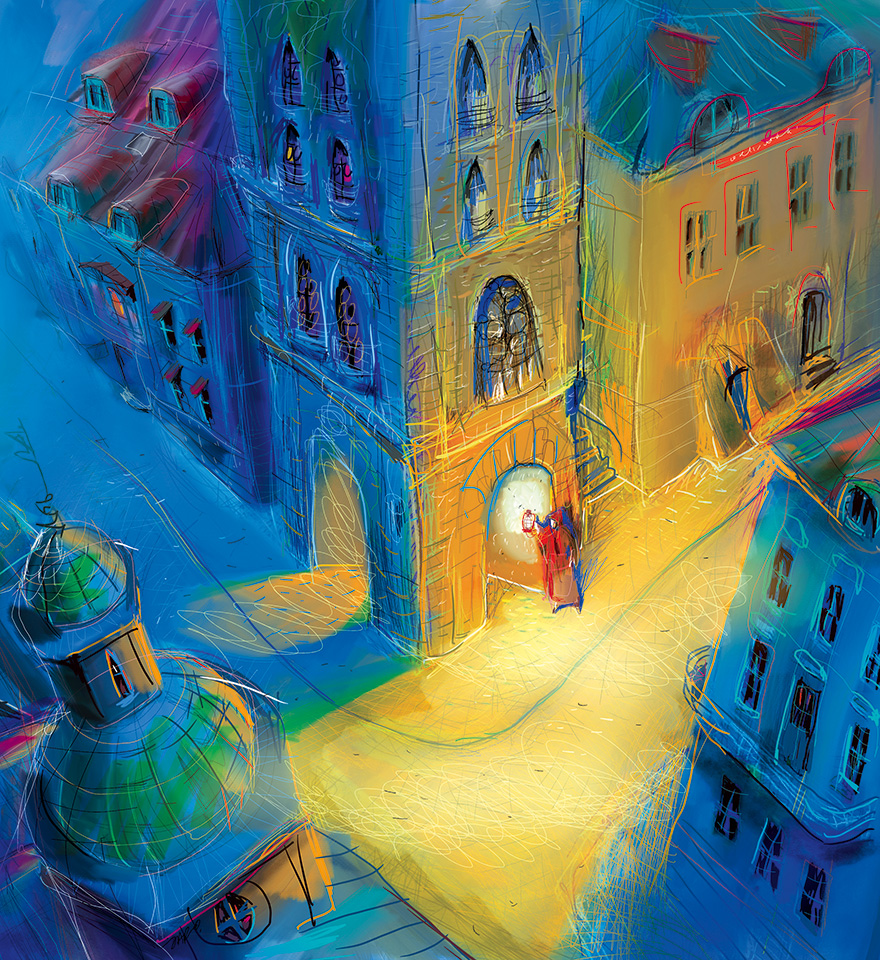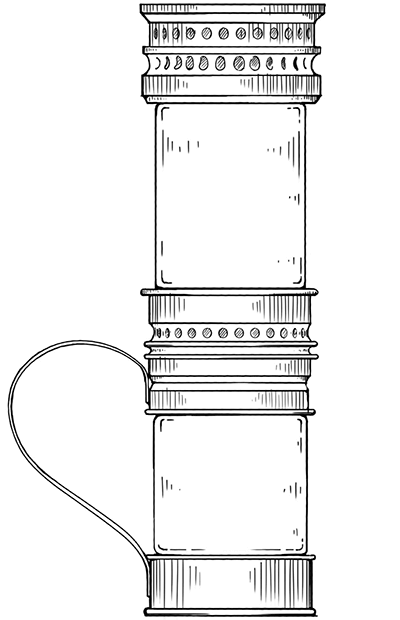ZehJan
September 2, 1817, Lancut city, Poland —
January 25, 1897, Boryslav city, Austria-Hungary (today it is Lviv region, Ukraine)
LukasevychIhnatiy
March 8, 1822, Zadushnyky village, Poland —
January 7, 1882, Khorkuvka village, Poland
Kerosene lamp
Sometimes failure is the way to an invention.
In 1852, Lviv pharmacists Jan Zeh and Ignatiy Lukasevych were ordered to turn oil into the nipple, but they were rubbish at it. In fact, it is good, because we have learned that the nipple made from oil is a strong poison.

But they undertook to purify oil persistently. The substance obtained was without the characteristic oil odor, was light brown and what is the most important — it burned well, leaving no soot.
At that time, in addition to candles, the houses were lit by lamps that operated from oil or grease. People used animal or fish oil. They poured the combustible substance into a container, lowered the wick into it so that it would seep into it, and set fire to its edge. The first oil lamps appeared in the Stone Age (Paleolithic) and were used by the people of that time to illuminate their “homes”. The rock paintings that archaeologists find in the depths of the caves were made by lighting such lamps. The vessel for the oil was carved out of stone. Spanish archaeologists have recently recreated several such vessels. They have hardly changed since Zeh and Lukasevych set to work.
Street lighting was still worse. Usually pedestrians themselves had to take care to see the road where they are going. When they went outside at night, they took a lantern with them. Although in the early sixteenth century, for example, the citizens of Paris were forced to keep home lamps on their windowsills. In the seventeenth century, the first lanterns began to appear on the streets of European cities, but only large ones. However, they did not give much light, and the oil was sometimes sprayed, so people prudently avoided them.
So when Zeh and Lukasevych saw how the substance they had invented burned, they understood that it was the best substance for making new lamps. The substance was called «gas»(transliteration from Ukrainian), from the English gas-oil (literally “light gas oil”), or «kerosene» from the Greek “keroseneion” — “wax oil”. In 1853, Zeh received an Austrian patent for an invention for a method of refining oil (then Lviv was under the reign of Austrian). The following year they were awarded a certificate for perfect oil purification at the World’s Fair in Munich.
Adam Bratkovskyi helped the inventors to design a new lamp by slightly changing the design of the oil lamp. In March 1853, the lamp began to illuminate the window of “Under the Golden Star” pharmacy, where both pharmacists worked. Of course, a crowd of interested people immediately gathered on the street. The lamp was something incredible, it gave light like 20 candles lit at the same time.
After that, Jan Zeh left the pharmacy business, but he opened a shop on a nearby street and sold lamps and kerosene.
“Homeowners and suburban people bought these lamps. Many students studied at night by the light of these lamps”, —said the inventor.
Lukasevych also left pharmacy, but in order to study oil and develop oil fields. At first he did it in Boryslav. That’s where they got the oil for purification.
At that time Boryslav was the center of the oil industry of Ukraine and Europe. There was so much oil that it was collected simply from the surface of rivers and shallow pits. After that Lukasevych moved to Drohobych. Later he went to Polianka village near Krosno city in Poland, where he finally organized an oil mine.

Kerosene lamp of Bratkovskyi
And what about the nipple customer? When Abraham Shreiner — the tradesman, who brought those barrels of oil to the pharmacy, realized that there would be no business, he took a kerosene lamp and went with it to Vienna, where he sold his sample to businessman Rudolf Ditmar. Neither Zeh nor Lukasevych didn’t obtained a patent for the lamp, so several factories launched the production of lamps immediately, but the “Brunner Brothers, Hugo Shnaider and Rudolf Ditmar” factory became the most famous and successful...
Kerosene lamps and street lamps quickly became popular throughout Europe. Around the same time, kerosene was patented in America. Although a few years later, on December 31, 1879, Thomas Edison introduced an incandescent lamp with platinum filament and a completely different era in lighting, kerosene lamps were actively used even during the twentieth century. Kerosene itself is still one of the types of fuel.